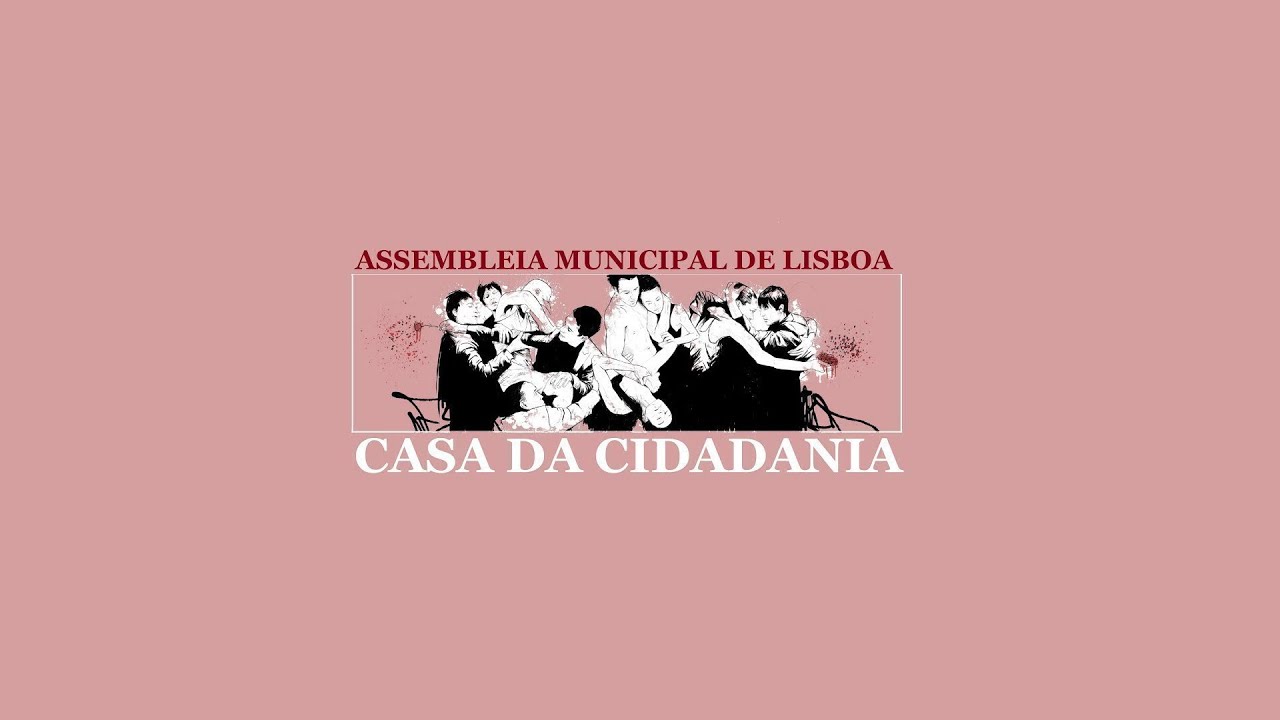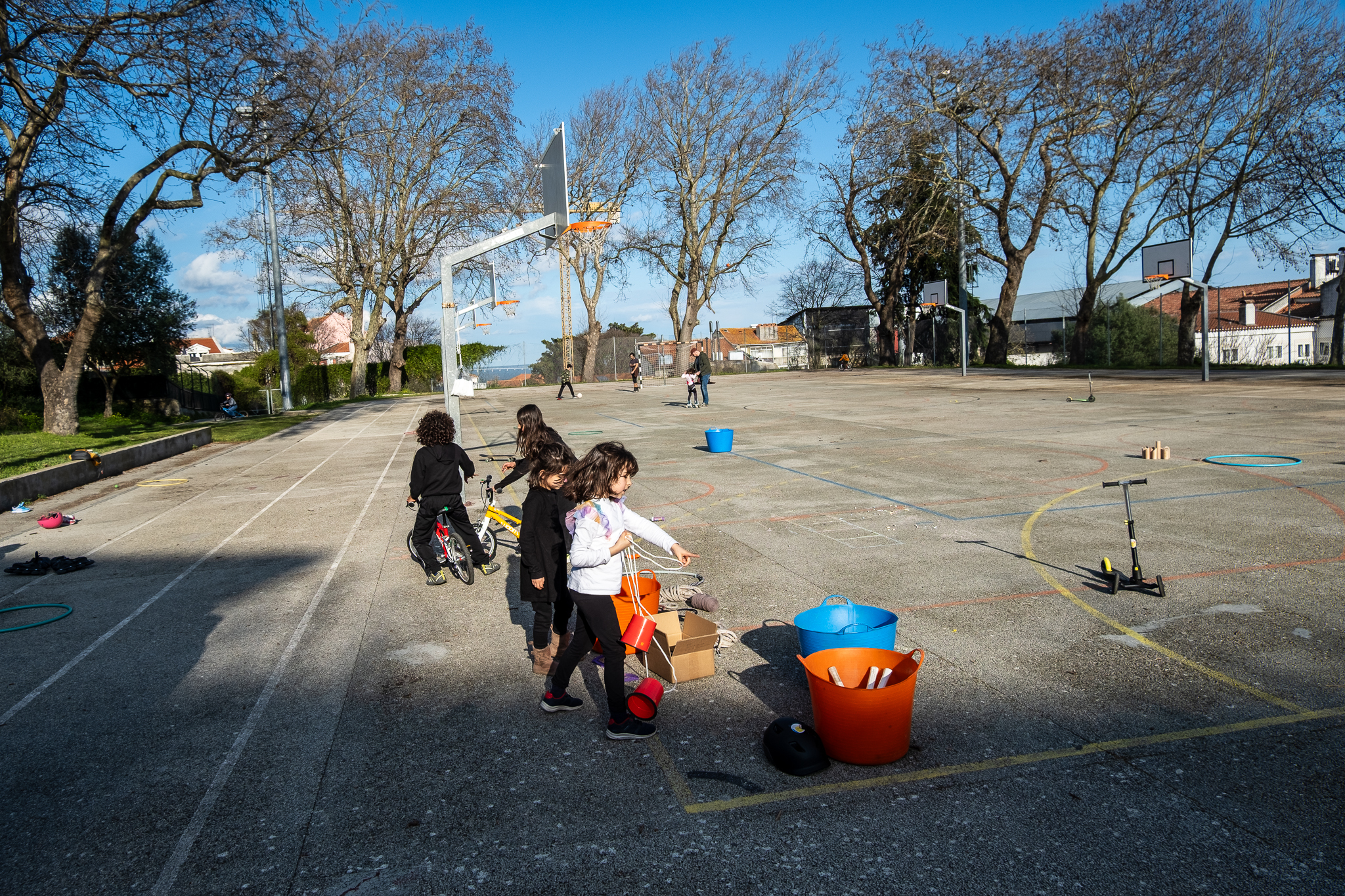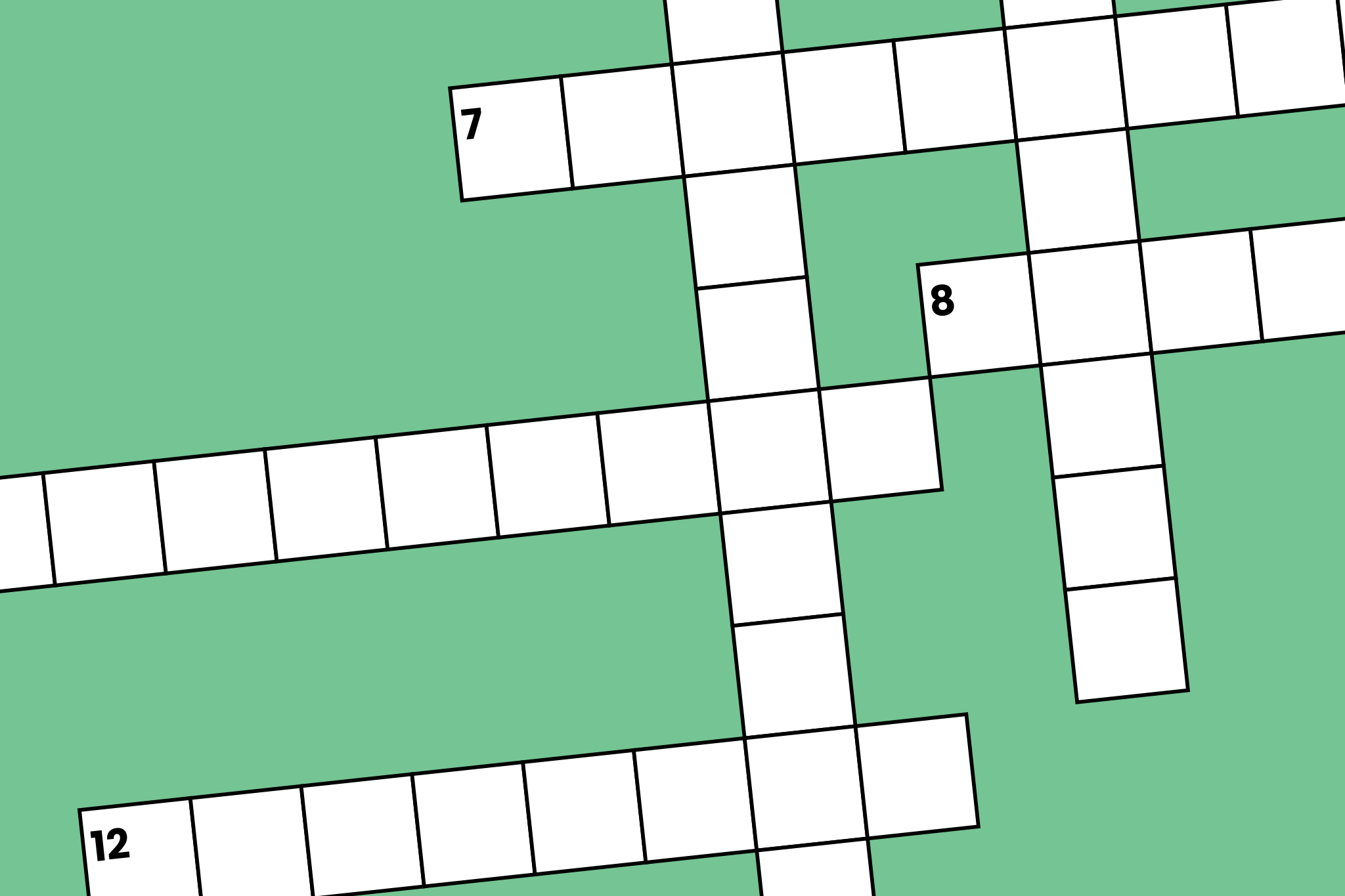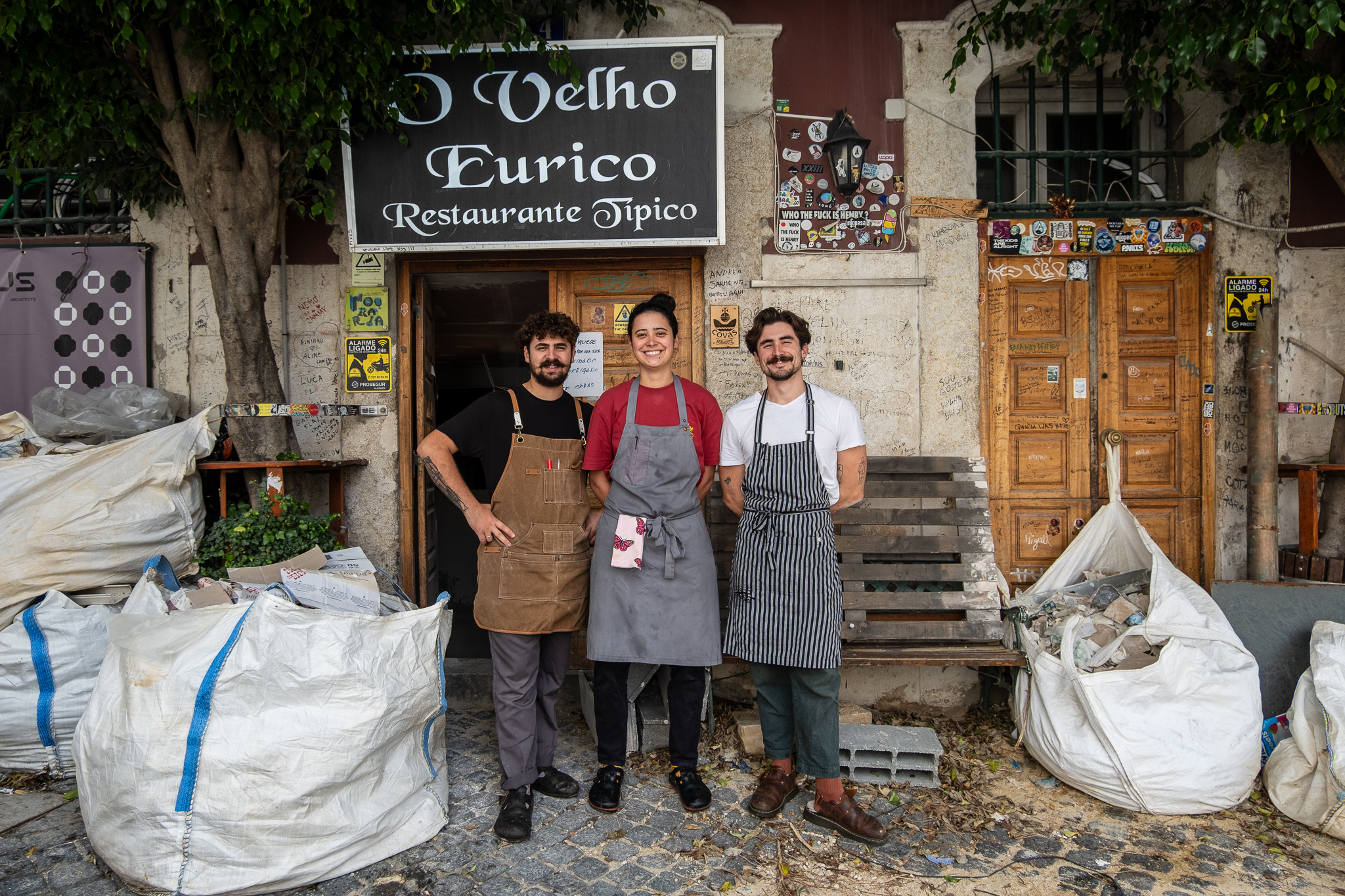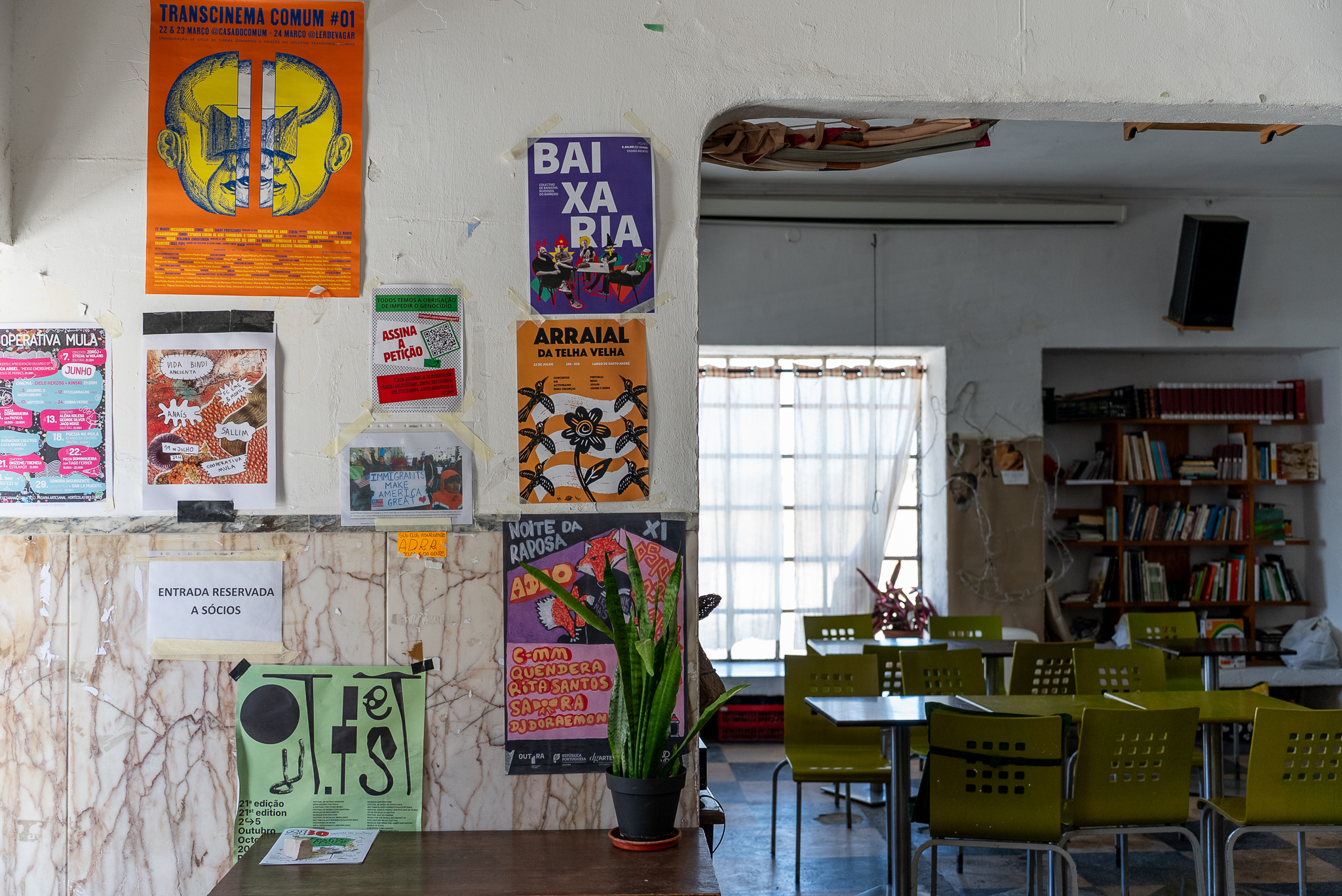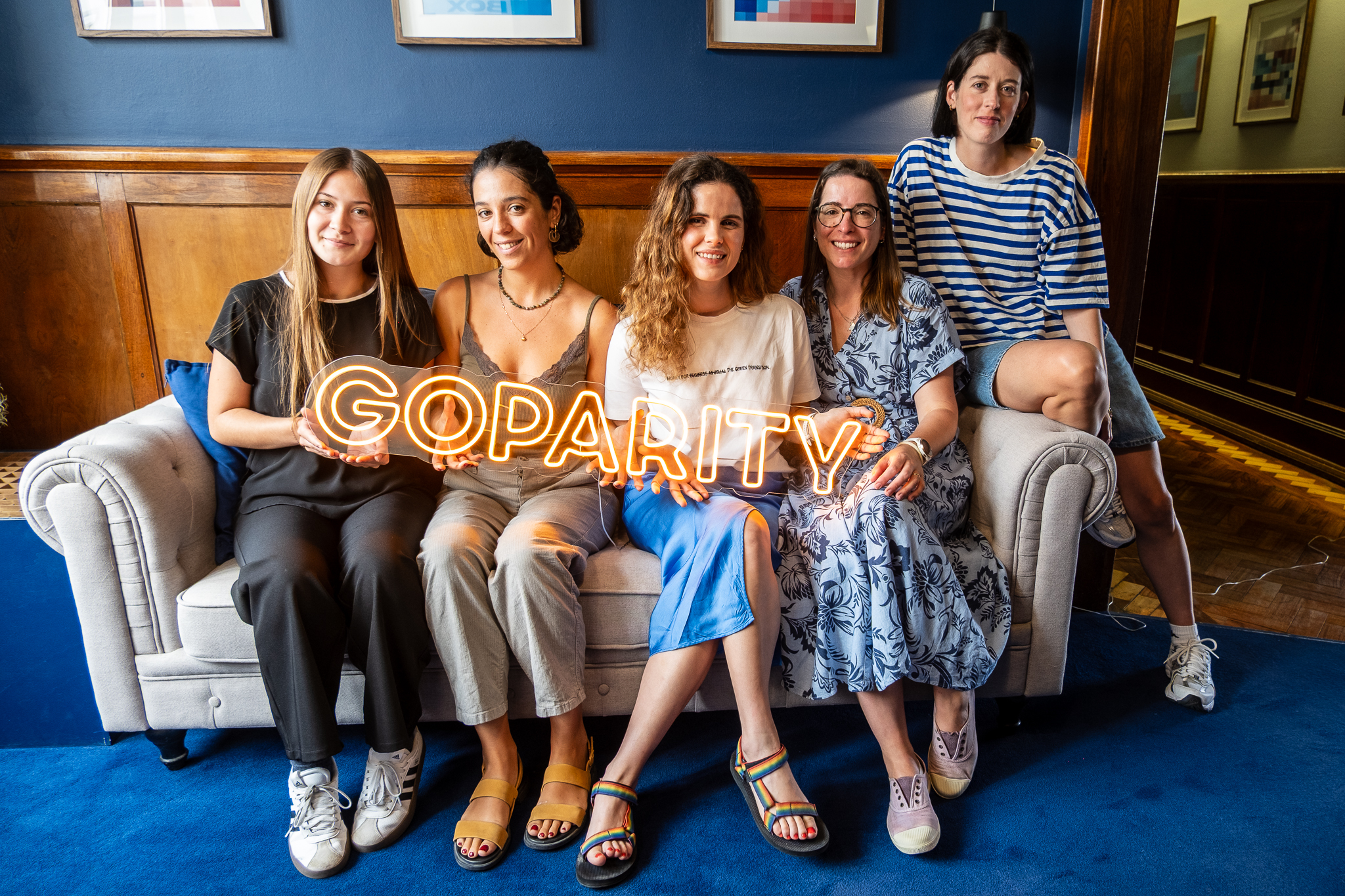Uma falha de comunicação dos serviços da Câmara de Lisboa gerou uma confusão em torno do Forte de Santa Apolónia. Para este local, já estava decidido um parque infantil inclusivo – ideia que saiu do Orçamento Participativo (OP) de 2018/19 – quando, na edição de 2021 do OP, um grupo de moradores propôs e votou…
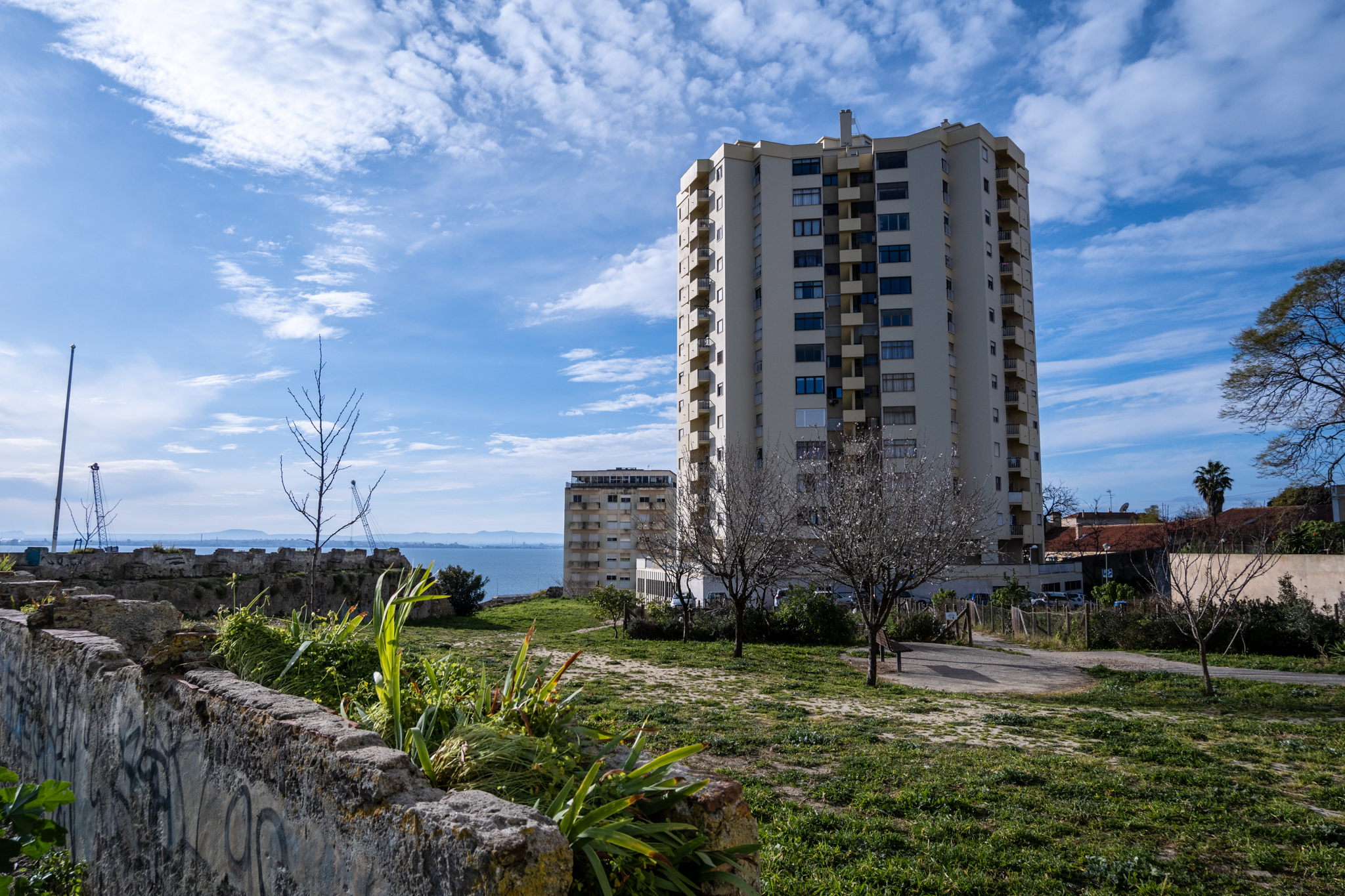
Não muito longe da estação ferroviária e viradas para o rio, erguem-se algumas ruínas do que em tempos foi o Forte de Santa Apolónia, uma muralha defensiva que nunca terá sido concluída e que terá sido erguida na segunda metade do século XVII. O forte faria parte de uma linha defensiva da cidade ao longo do Tejo, planeada durante as Guerras da Restauração, e que envolvia a construção de três dezenas de baluartes em Lisboa.
Em 1968, o Forte de Santa Apolónia passou para a posse da Câmara de Lisboa e, durante os anos 1980, foi construído em cima dele um prédio habitacional de 14 andares, o edifício Concorde. Em 1996, o forte foi classificado como Imóvel de Interesse Público (IIP), ficando assim salvaguardado o que a construção do Concorde e a pressão urbanística não destruiu. Hoje, do Forte restam apenas algumas muralhas, apesar de em estado de degradação. Houve partes dessas muralhas que foram sendo substituídas por muros de cimento para impedir que os terrenos não desabassem numa zona que entretanto se consolidou.
O Forte de Santa Apolónia localiza-se na freguesia da Penha de França, no limite com a freguesia de São Vicente. Conforme nota Mariana Aires Ferreira, num trabalho de mestrado entregue em Junho de 2017, “desde que o Forte foi declarado IIP, em 1996, pouco se fez para manter e reabilitar o monumento”. A então aluna recolheu alguns marcos significativos: em 2009, a zona do Forte foi integrada no Plano de Pormenor da Calçada das Lajes, no âmbito de uma intervenção planeada de 12,3 hectares que nunca chegou a ser realizada; e entre 2015 e 2016, foram realizadas obras de urgência devido ao risco de o muro em frente do edifício Concorde e de muros dispersos no espaço do Forte ruírem. Antes dessas intervenções nesses muros, em 2014, a área interior do Forte, dentro das muralhas, foi reabilitada com a criação de um pequeno espaço de lazer com hortas comunitárias, caminhos pedonais, árvores de pequeno porte, e alguns bancos e zonas de estadia.
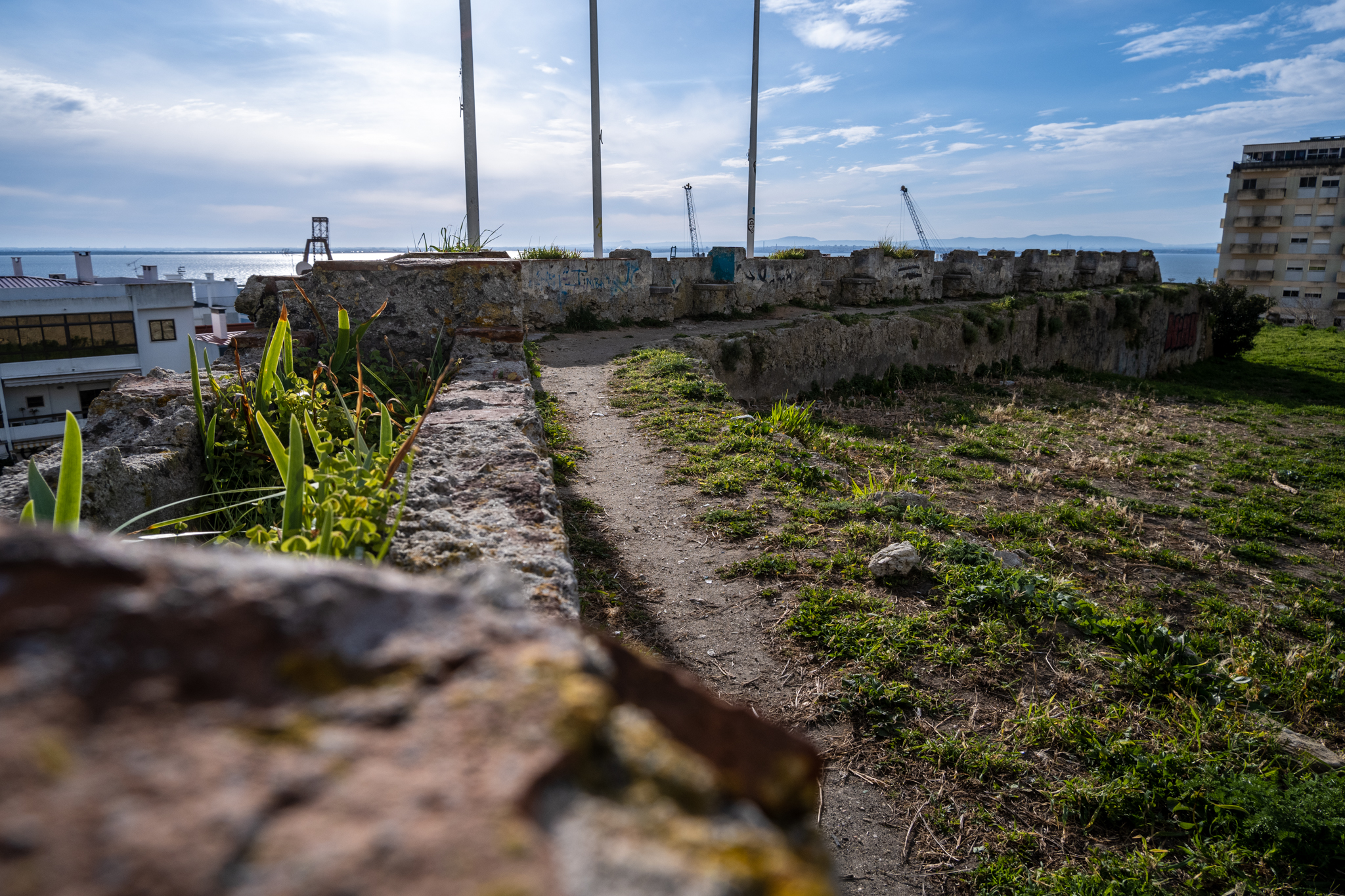
Mas, para vizinhos de São João (Penha de França), o espaço verde criado é insuficiente para satisfazer as suas necessidades de lazer. Querem um verdadeiro jardim no Forte de Santa Apolónia, que sirva a população local [a freguesia da Penha conta com uma elevada densidade populacional e com poucos espaços verdes], que atraísse pessoas para a freguesia e que dignificasse aquela zona esquecida da cidade e o monumento.
Um jardim no forte
Por isso, em 2021, um grupo de moradores pediu a criação de um espaço verde a sério no interior do Forte, recorrendo para tal ao Orçamento Participativo (OP). A proposta, estimada em 150 mil euros, colheu 177 votos e acabou por ser uma das seleccionadas naquela edição anual do OP. Decorrida a votação e seleccionada a proposta, Sandra Campos, a principal proponente, teria apenas de aguardar que o processo de criação jardim fizesse o seu caminho dentro do OP e dos serviços municipais – como qualquer proposta que é apresentada no âmbito deste procedimento participativo – e que o projecto acabasse concretizado no terreno.
No entanto, Sandra começou a estranhar silêncios da parte da Câmara. “Recebi em 2021, em Junho, um e-mail da Câmara Municipal a dizer que tinha ganho o Orçamento Participativo com a proposta para o Forte de Santa Apolónia e que me iam contactar para receber o troféu. Mas nada aconteceu. Em Janeiro de 2022, recebi outro e-mail a dizer que a Câmara Municipal tinha aprovado a verba em Orçamento e que já estaria em condições de contactar os vencedores. E, novamente, nada”, relata ao Lisboa Para Pessoas (LPP).
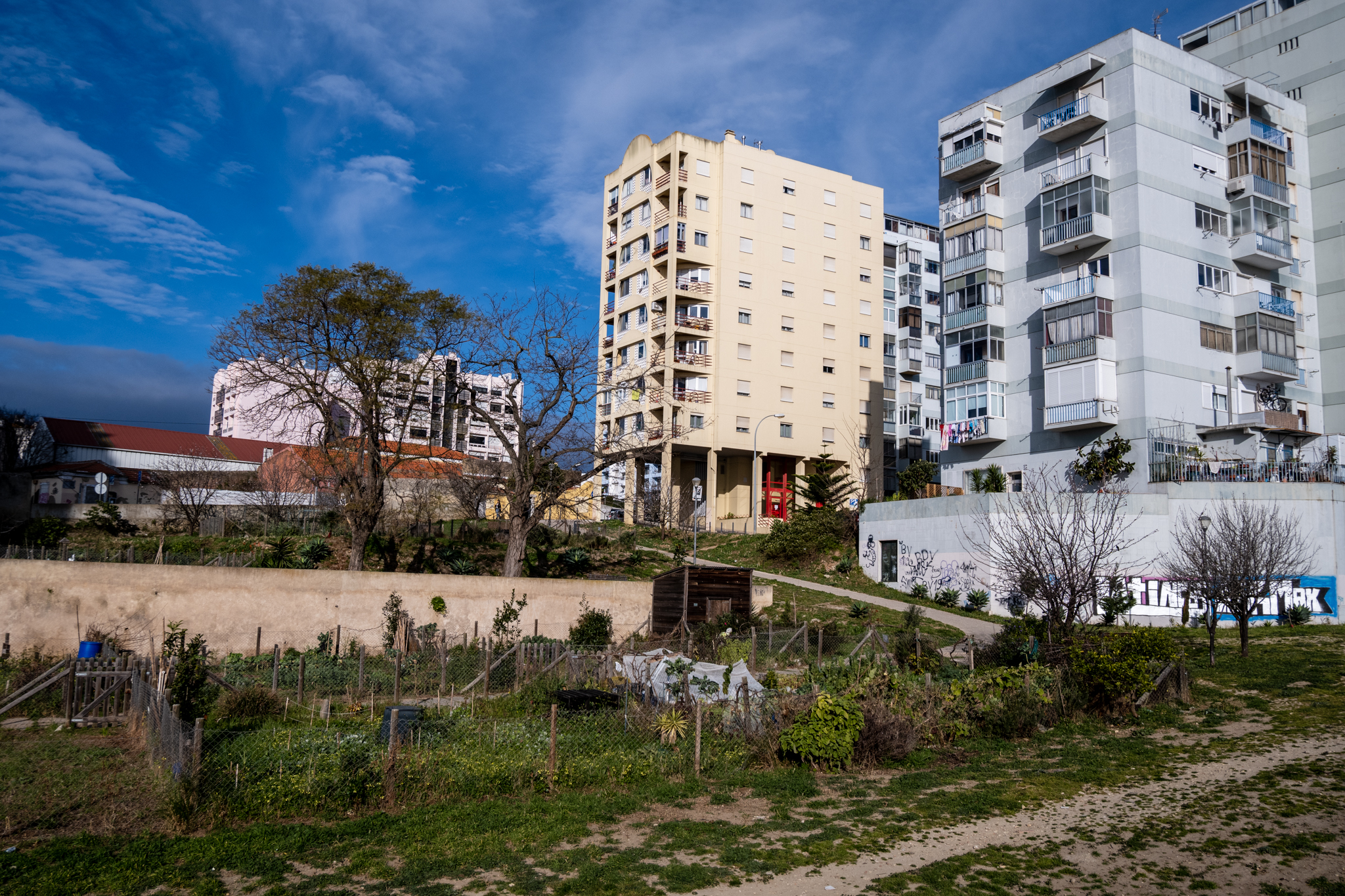
Foi então que decidiu ir à sua conta no site do OP “ver se estaria lá alguma coisa”. E, nesse momento, ter-se-á deparado com uma coisa: a Câmara de Lisboa tinha integrado dois projectos vencedores do OP num só, sem envolver os respectivos proponentes – ou, pelo menos, a si. Essa integração aconteceu com a manutenção do título original da proposta de Sandra, “mas toda a descrição do jardim foi apagada e colocaram apenas uma referência a um enquadramento paisagístico a um futuro parque infantil inclusivo”.
A alteração terá sido feita entre a avaliação técnica da proposta de Sandra pela Câmara e a sua publicação para votação. “Inicialmente até pensei que mudaram isto já depois de termos ganho mas questionei a Câmara de Lisboa sobre o assunto e disseram-me que não”, conta. “Não reparei na altura da votação porque mantiveram o título” e era isso que aparecia nas partilhas nas redes sociais. “Não havia nada no processo do OP que me fizesse ir lá dentro da página, até porque nem sequer tem um contador para sabermos quantos votos estamos a ver. Não há nada que nos faça ir lá ver se há alguma novidade”, garante Sandra.


O parque infantil inclusivo resultou de uma edição anterior do OP, a edição de 2018/19, como veremos mais adiante neste artigo. E, quando o OP de 2021 se iniciou, já estava planeado esse parque infantil para o Forte de Santa Apolónia, com projecto desenhado – ou seja, havia um compromisso assumido para aquele espaço; só que ninguém na Câmara de Lisboa avisou Sandra no momento de apresentação, ao OP, da sua ideia do jardim para esse mesmo Forte. E essa falha de comunicação levou a que duas ideias de cidadãos entrassem em conflito por um mesmo espaço, como veremos mais adiante também.
O regulamento do Orçamento Participativo permite, no artigo 9º, que duas ideias vencedoras sejam combinadas numa só “perante a semelhança do conteúdo, a sua complementaridade, ou a sua proximidade a nível de localização”, mas este processo tem de ser feito “em articulação com os proponentes”. O regulamento deixa também bem claro, no artigo 17º, que o envolvimento dos autores das ideias votadas deve ser constante, tanto “numa fase inicial de definição do projecto, bem como nas fases seguintes do seu desenvolvimento, ou sempre que necessário, garantindo que o proponente se reveja na solução final executada”. Sandra alega que estas duas alíneas não foram cumpridas.
Um parque infantil e um jardim?
A proposta de um parque infantil inclusivo e adaptado para crianças com mobilidade condicionada foi lançada por Patrícia Leal e saiu vencedora da edição de 2018/19 do Orçamento Participativo, com 1096 votos da comunidade. Orçamentada em 300 mil euros, a proposta destinava-se à freguesia de São Vicente – vizinha da freguesia da Penha – e, numa fase inicial não foi pensado para o Forte de Santa Apolónia.
Em declarações na Assembleia Municipal de Lisboa (AML), no passado mês de Março, o Vereador Diogo Moura, responsável pela pasta do OP, explicou que, no final do mandato anterior, foram analisadas diferentes localizações para o parque infantil na freguesia de São Vicente, tendo-se chegado à conclusão que a melhor delas seria na freguesia vizinha da Penha, no local do Forte de Santa Apolónia. Ainda nesse mandato, em 2020, existiram duas reuniões entre a Câmara e a proponente da ideia vencedora, para apresentação do projecto e discussão das localizações, e iniciou-se o “processo de estudo global para toda a área do Forte”. Ou seja, “antes do início do ciclo do OP de 2021, havia uma proposta já aprovada pelos serviços da Câmara Municipal e já estava a ser desenvolvido um estudo. Já havia um compromisso de construção deste parque infantil inclusivo/adaptado dentro do Baluarte de Santa Apolónia”. Para Diogo Moura, “a Câmara tinha duas hipóteses no anterior mandato: ou dizia que havia um compromisso para aquele espaço e rejeitava a proposta – e nunca haveria proposta para o Baluarte de Santa Apolónia nos termos que foram apresentados pelos proponentes –; ou então incluía esse compromisso na Câmara. E acho que a Câmara e bem fez essa inclusão, e acho que o projecto final é bastante bom para o local. Estamos a falar de dois projectos que são complementares e compatíveis.”

Ao Lisboa Para Pessoas, Patrícia Leal confirma as reuniões com os serviços da autarquia e ainda visitas ao terreno para avaliar diferentes opções de localização. “Os técnicos [municipais] viram comigo vários espaços, só que todos os que vimos não dava por uma razão ou por outra”, conta, realçando que as pessoas da Câmara “foram incansáveis em encontrar espaços”. “Eu confio nos técnicos. E confiei na palavra de que não dava para ficar aqui, na minha freguesia. Acho que essa decisão foi tomada com bondade. Não vi nenhuma má intenção por detrás dela. Vi apenas um conjunto de pessoas que tentaram arranjar ao longo deste tempo um espaço, não havendo espaço em São Vicente”, garantiu Patrícia. “Não sou técnica, não sou engenheira, não sou arquitecta, não sou nada. Não tenho culpa que o parque infantil tenha ido para ali. Eu somente aceitei, porque os técnicos da Câmara me disseram que não havia nenhum espaço disponível na minha freguesia.”
A primeira ideia de local que Patrícia sugeriu foi nas traseiras do Museu da Água/EPAL, junto às Escadinhas das Comendadeiras de Santos. “Disseram-me que ficava muito próximo a uma via estruturante, a Avenida Mouzinho de Albuquerque, onde passam muitos carros. Era um espaço que estava ali ao abandono, mas disseram-me que esses terrenos não estavam bons para receber o parque. Depois fui lá e percebi melhor.” Falou-se também na Quinta do Ferro (também não dava por esta zona estar integrada num projecto específico de reabilitação urbana) e de um outro local no Vale de Santo António (o mesmo problema – está integrado num plano de urbanização que tem tardado a sair do papel. Sobre o Forte de Santa Apolónia, Patrícia diz que não achou mal. “Pensei que até podia ser um bom sítio, tinha algumas escolas ali ao pé. E pela parte de cima, por onde entrei quando lá fui, não achei que fosse inacessível.”
Um parque infantil para todas as crianças
Na página sobre a proposta do parque infantil no site do OP, é possível encontrar a ilustração anterior, feita pelos serviços técnicos da Câmara de Lisboa, e uma descrição do projecto. Segundo esta, o parque infantil ocuparia a “área onde actualmente estão implantadas as hortas urbanas, no patamar à cota mais baixa (…) por possuir características mais planas e mais adaptáveis ao projecto, reduzindo a complexidade da sua implementação”. Envolveria a “implantação de uma área lúdica inclusiva com incidência na faixa etária infantil, que possibilite a acção recreativa diferenciada, para um vasto leque de crianças com e sem limitações físicas ou cognitivas”, pretendendo-se a “sociabilização e interacção de todas as crianças quer no espaço, quer nos aparelhos lúdicos”.
Essa área lúdica envolveria 620 metros quadrados e dividir-se-ia em dois: um espaço com com vários brinquedos “implantados sobre pavimento sintético, contínuo, de amortecimento” e rodeado por uma “ampla zona de estadia”, constituída por bancos em betão armado, onde os pais e mães poderiam sentar-se; e um “jardim sensorial com 175 metros quadrados”, resguardado desse espaço e onde as crianças encontrariam “aparelhos sensoriais (tácteis e musicais) e de desafio (cognitivo), bem como uma área verde, regada, com plantação de espécies de características aromáticas capazes de despertar os sentidos (olfato e tato)”. Seriam colocadas vedações no acesso ao parque e nos limites laterais do jardim sensorial, nova iluminação e ainda um bebedouro da EPAL.
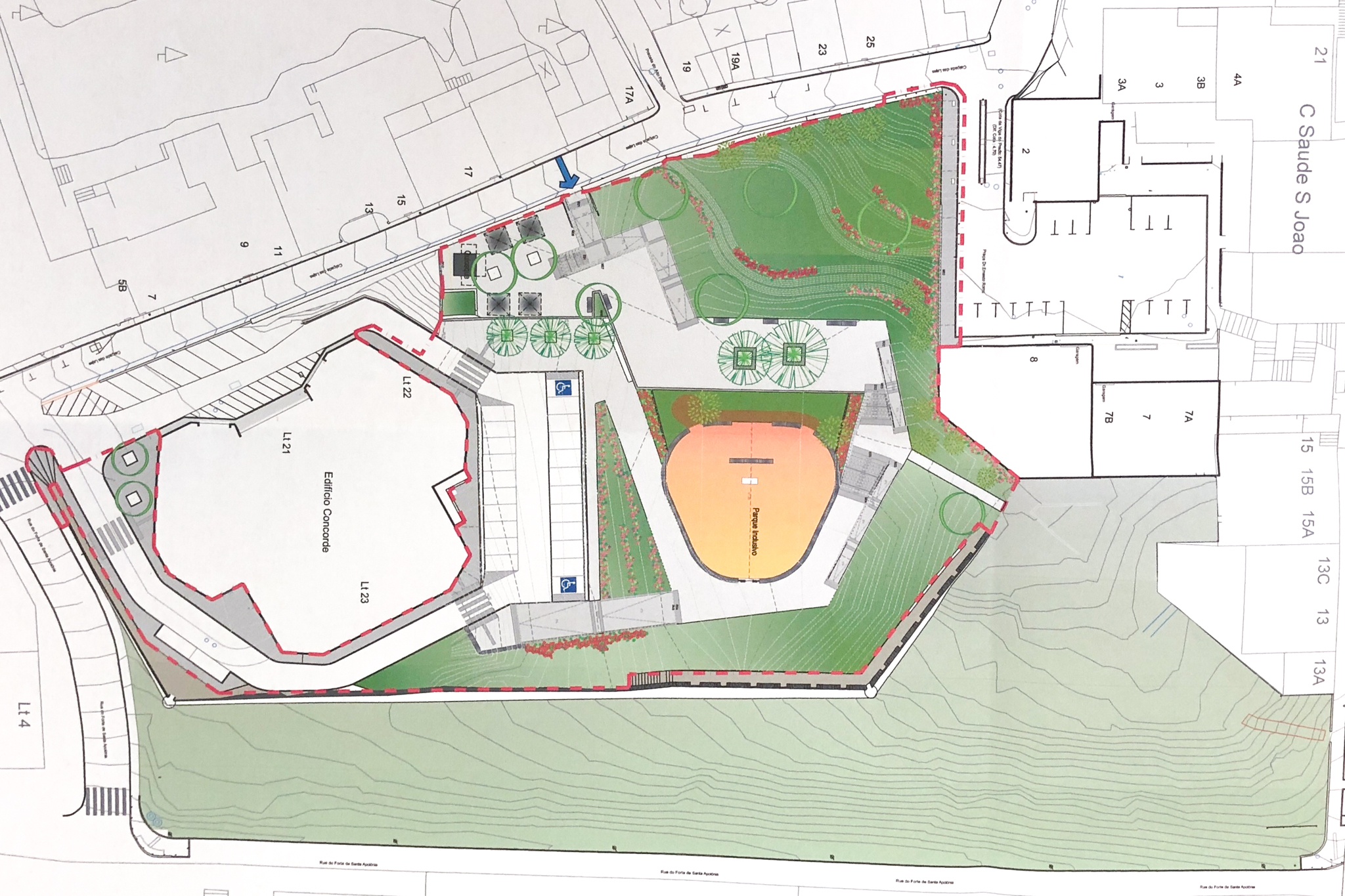
O parque teria capacidade para 124 crianças dos dois aos 14 anos. “Numa fase posterior”, toda a área acima da estrutura defensiva seria “intervencionada para enquadramento paisagístico, melhoria de acessos e estruturação do espaço”, incluindo a criação de um pequeno parque de estacionamento automóvel e de rampas acessíveis a qualquer pessoa. Seriam ainda “colocadas soluções tácteis de pavimento que orientem os utilizadores invisuais na área lúdica e no seu acesso, bem como, um dispositivo com áudio descrição que forneça aos invisuais o descritivo do local, distribuição dos aparelhos, conselhos de utilização e de segurança, para que possam orientar-se de forma autónoma no espaço do parque infantil e envolvente se necessário”, refere a descrição técnica disponível no site do OP.
Segundo ainda a página da proposta no site OP, onde é ler várias actualizações sobre ao mesma, o parque infantil, “apesar de autónomo”, seria integrado num “estudo global para toda a área” do Forte e seria concretizado no ano de 2022. Não chegou a acontecer. A última actualização publicada sobre o equipamento data de Abril do ano passado: “O projecto encontra-se repartido numa empreitada (em lançamento de empreitada) e num fornecimento por critérios materiais. Procedimento de aquisição em elaboração.”
Parque decidido antes do Jardim
Diogo Moura é defensor de parques infantis inclusivos na cidade. Quando o seu assento na AML era de deputado e não de vereador – ou seja, no mandato autárquico anterior –, Moura levou à discussão duas propostas pela criação de uma rede de parques infantis adaptados a qualquer criança, independentemente da sua condição motora.
A primeira foi aprovada por unanimidade em Outubro de 2018 e recomendava que a Câmara, “em estreita colaboração e coordenação com as Juntas de Freguesia”, avaliasse e estudasse a “possibilidade de adequar os parques infantis da cidade a crianças portadoras de deficiência, através da colocação de modelo de mobiliário adequado e remodelação, quando necessário, do respectivo acesso e pavimento”.
A segunda recomendação foi apresentada em Março de 2020 com o intuito de reforçar o cumprimento da primeira: “o Grupo Municipal do CDS-PP propõe à Assembleia Municipal de Lisboa que recomende à Câmara Municipal de Lisboa que, em articulação com as Juntas de Freguesia, elabore um plano de implementação de parques infantis inclusivos na cidade, priorizando a abrangência territorial do concelho”, podia ler-se no texto que contou também com uma aprovação por unanimidade. Moura concretizava: pedia um parque infantil inclusivo em cada uma das cinco zonas da cidade até Dezembro de 2020, “mês em que se assinala o Dia Nacional da Pessoa com Deficiência e o Dia Internacional das Pessoas com Deficiência, como acto simbólico e contributo efectivo para uma Lisboa, cidade inclusiva para todos”. Para o então deputado municipal centrista, trata-se de “uma medida necessária, justa e inclusiva, permitindo que as crianças, independentemente da sua condição física e psicológica, possam partilhar o mesmo espaço público recreativo e lúdico”.
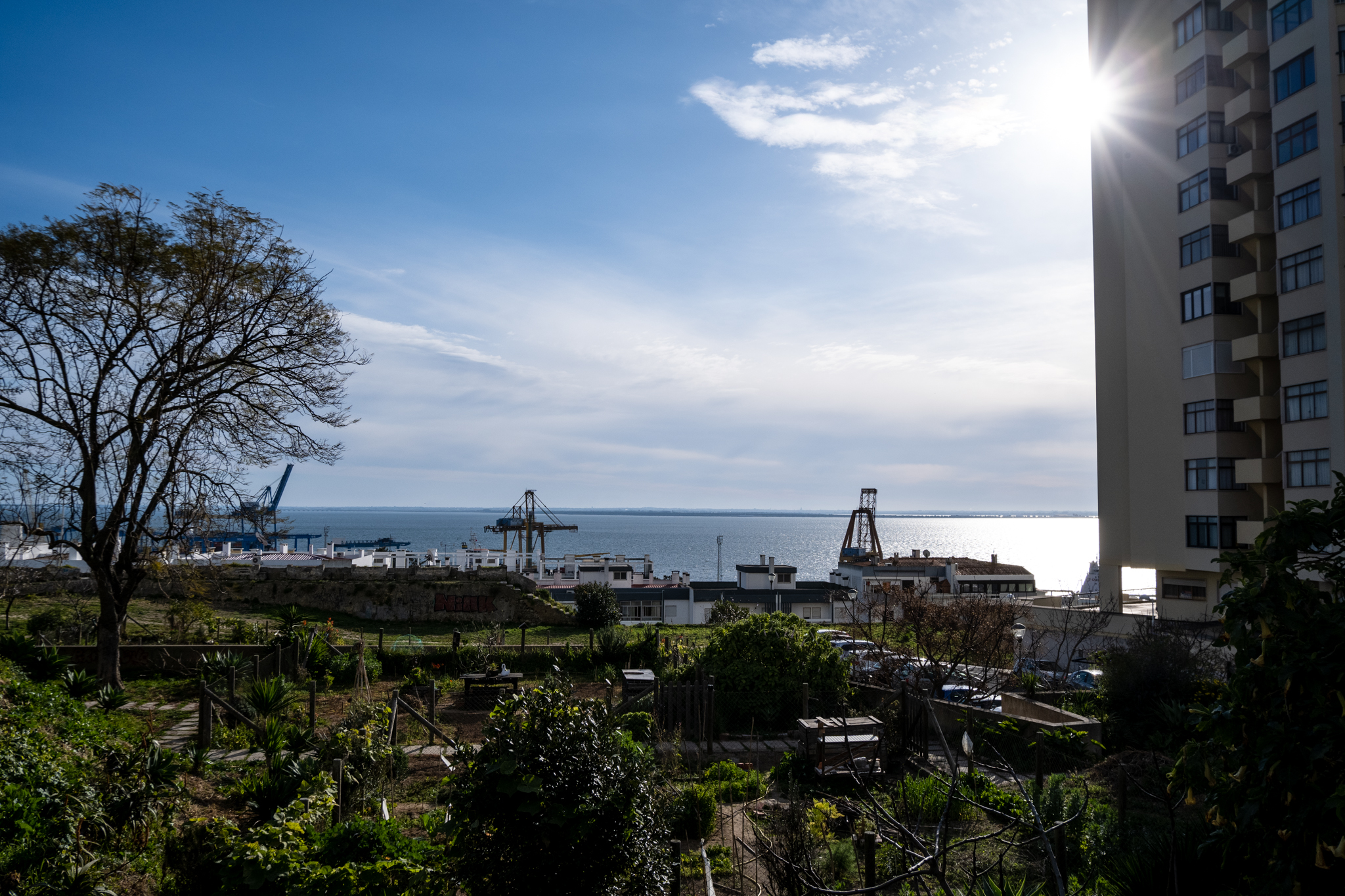
As recomendações do CDS nunca chegaram a ser concretizadas pela autarquia. No entanto, Moura referiu agora na AML que a Câmara, da qual agora faz parte, pretende avançar com essa rede de parques infantis inclusivos, olhando com bons olhos para a ideia que saiu do OP 2018/19. O Vereador reconheceu também que existiu um erro de comunicação: para a integração do parque infantil na proposta do jardim de Sandra deveriam ter sido envolvidos os respectivos proponentes. Ora, Sandra Campos não só diz que não foi tida em consideração nesta união de projectos como entende que a sua ideia original de um jardim no Forte ficaria substancialmente alterada com a inclusão do parque infantil. Para a moradora da freguesia da Penha de França, um parque para crianças com mobilidade condicionada naquele local nem faz sentido por todas as incessibilidades existentes na envolvente, onde existem ruas íngremes, estreitas e sem áreas pedonais universais. E existem, no seu entender, outras localizações possíveis para o parque infantil inclusivo que não comprometam o projecto vencedor de um jardim no Forte de Santa Apolónia.
“Eles querem ter um parque infantil adaptado para crianças com problemas de mobilidade dentro de um Forte que tem uma acessibilidade inacessível”, aponta ao LPP. “E depois porque é que havemos de roubar um Orçamento Participativo que é da freguesia de São Vicente. Porque é que havemos de ter um OP de uma outra freguesia para enfiar ali dentro quando a gente não votou naquilo”, disse. Com o LPP e com a Assembleia Municipal, onde Sandra teve oportunidade de falar sobre este assunto (como perceberemos melhor mais à frente), partilhou fotografias de sinais de perigo de derrocada já existentes na zona, juntamente com outras imagens do estado actual do Forte e do que dizem ser os maus acessos ao mesmo.

Sandra teve uma reunião com a Câmara de Lisboa a 15 de Março de 2022, onde viu o projecto da autarquia para o Forte com o parque infantil inclusivo: um desenho com poucas árvores, com uma bolsa de estacionamento automóvel, o tal parque infantil e ainda uma área cimentada para feiras. “Cheguei lá e espetam em cima da mesa um projecto, dizendo que era aquilo que iam fazer e que iam juntar dois Orçamentos Participativos”, conta Sandra. Foi nesse momento que a proponente do jardim diz que teve confirmação da união dos dois OPs.
Quando submeteu o jardim ao OP, Sandra tinha uma ideia bem diferente: propunha “recuperar um local degradado, salvaguardar um valor patrimonial e promover um espaço verde de público de qualidade” numa freguesia onde estas áreas de lazer escasseiam. Queria“grandes talhões relvados polivalentes”, uma “rede de caminhos lógica e funcional”, a “plantação do máximo de árvores” (como pinheiros-mansos para proporcionar “bastante sombra”) e pendurar nelas “casinhas de passarinhos”, ter uma zona de piqueniques com mesas e bancos, à sombra dessas árvores; e ainda“um quiosque com venda de pequenos lanches, cafés e refrescos ou, ainda, jornais”. O projecto também previa uma zona destinada às crianças com uma teia de aranha – algo que foi abandonado, nessa reunião de 15 de Março, porque a autarquia terá considerado que seria “perigoso”.
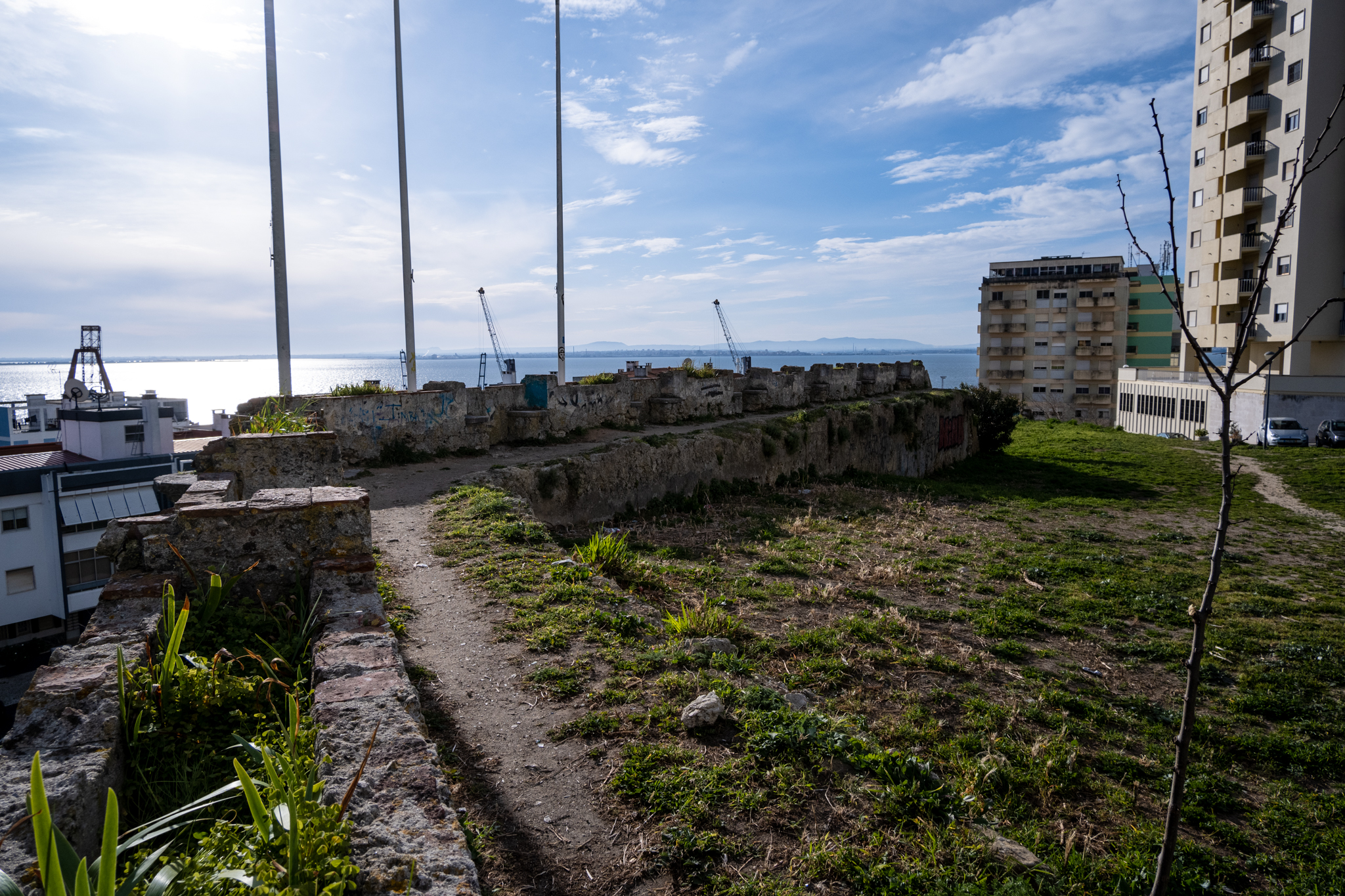
Na AML, Diogo Moura confirmou-o: “O projecto que foi apresentado pelos proponentes para o Baluarte de Santa Apolónia tinha um parque infantil, um parque que era uma cópia de um projecto da Câmara Municipal de Lisboa do início dos anos 2000 e que era constituído por uma teia de aranha. Hoje, um parque infantil com uma teia de aranha já não faz sentido, é perigoso, coloca em causa a segurança das crianças e de quem as acompanha. O projecto foi adaptado para um parque infantil inclusivo, porque, por um lado, é isso o que as exigências actuais pedem, por outro lado, porque há uma rede de parques infantis inclusivos que a Câmara Municipal quer implementar na cidade, e também porque faria todo o sentido que ter um parque infantil inclusivo naquele local.”
Sandra tem um entendimento diferente: “Eu e as pessoas que votaram no OP entendemos que as crianças poderiam brincar no jardim à vontade, sem equipamentos específicos. Não é preciso haver equipamentos infantis em tudo o que é espaços verdes.”, disse-o ao Lisboa Para Pessoas. “Queremos ter um jardim numa freguesia onde não há muitos espaços verdes.” Mas “eles acharam que era muito engraçado pegar nos 300 mil euros desse outro OP e nos 150 mil do meu OP, para fazer ali uma coisa que não é um jardim mas um enquadramento paisagístico a um futuro parque infantil.” Sandra também concorda: “A Câmara podia ter-me dito – e tinha obrigação de o fazer – que havia uma condicionante no Forte. Deviam ter-me perguntado se queria manter o meu OP dentro do Forte de Santa Apolónia, aceitando que já existia para lá um outro OP, ou então pensar num outro local.”
Uma petição para defender o Jardim
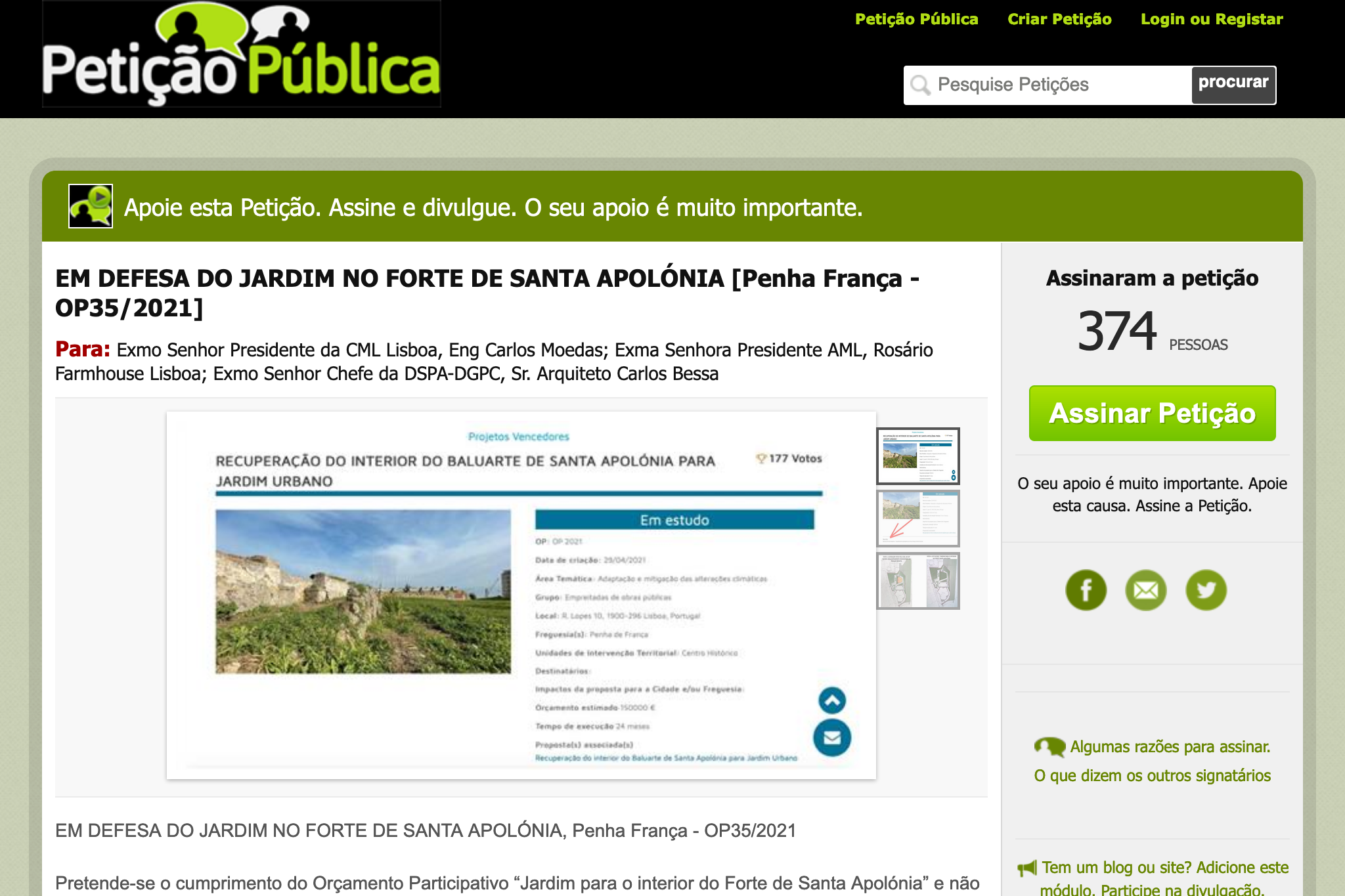
A desilusão e preocupação com o futuro do projecto do jardim fez Sandra lançar logo no início 2022 uma petição online em defesa dessa mesma ideia. As 310 assinaturas conseguidas fizeram com que a petição fosse analisada na Assembleia Municipal pelas Comissões Permanentes dedicadas aos assuntos da Estrutura Verde, da Cidadania e da Educação.“Os moradores votaram para um Jardim e têm direito a ter um Jardim”, pode ler-se no texto da petição. “A proposta foi avaliada, aprovada, votada por cidadãos e, no fim, ficou a expectativa de que a sua vontade iria ser respeitada.” Mas, “afinal, a CML e, aparentemente, as JFs sentiram-se na liberdade de ignorar por completo a vontade dos cidadãos e usarem a seu belo prazer as verbas originalmente adjudicadas aos OPs e à Cidadania”.
Sempre que uma petição entra na AML, esta é primeiro analisada na especialidade por uma Comissão Permanente ou por várias Comissões, dependendo da área em que a reclamação popular se insere. A Comissão ou Comissões ouvem os diferentes visados e responsáveis políticos, e elaboram um relatório com algumas conclusões e recomendações que, depois, em plenário, os deputados municipais poderão discutir e aprovar para que essas recomendações possam ser formalmente endereçadas à Câmara. O processo foi seguido, claro, com a petição de Sandra, que deu entrada na AML em Junho de 2022. O relatório das Comissões – foram chamadas três – ficou pronto no final desse ano e foi apreciado em sessão plenária, por todos os deputados municipais e com a presença de Sandra e de outros peticionários no passado dia 2 de Março. Foi das audições realizadas e da discussão em plenário que conseguimos extrair parte da história contada ao longo deste artigo e declarações das várias partes envolvidas. Os documentos e o vídeo da sessão plenária podem ser vistos no final do artigo.
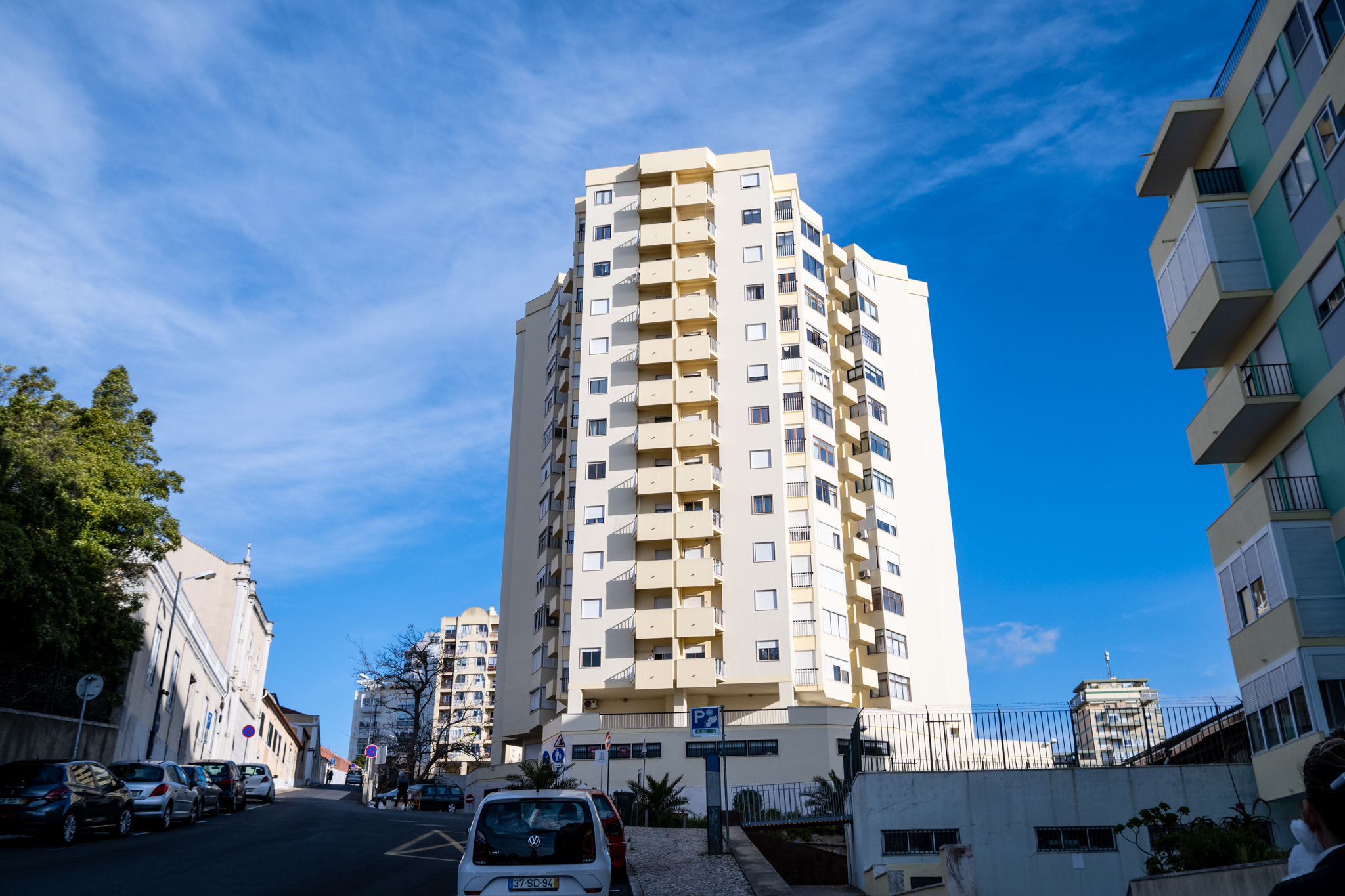
O relatório das Comissões da AML que analisaram este tema é bem claro: “concluiu-se que as normas regulamentares previstas no Orçamento Participativo 2021 não foram devidamente cumpridas, face à falta de comunicação e de informação aos proponentes do OP 35/2021”. E são deixadas duas grandes recomendações à Câmara, entretanto aprovadas: que “proceda à revisão/alteração do Regulamento do Orçamento Participativo, no sentido de clarificar e garantir o envolvimento dos proponentes nas diferentes fases do processo”; e que “dê cumprimento aos projetos vencedores”, reunindo “com ambos os proponentes de forma a encontrarem um consenso” e “admitindo a possibilidade de a execução dos OP poder ser conjunta ou separada”. Estas reuniões estão agora a acontecer e Diogo Moura já manifestou vontade de rever todo o processo do Orçamento Participativo – que, aliás, não se realizou em 2022 e que vai regressar só neste ano, depois do Verão, semi-renovado.
“Vivemos na cidade e precisamos de espaços para permitir o contacto com a Natureza, espaços para todos, dos mais novos aos mais velhos. E com tantas escolas ali por perto, são muitas as crianças que não têm contacto com a Natureza”, discursou Sandra na AML, em defesa do Jardim e da sua petição. “O que nós gostaríamos é que a Câmara realmente ouvisse as pessoas. Não entendemos que a Câmara mantenha a política do betão e a ideia de construção de um parque infantil adaptado num sítio sem acessos e que vai impermeabilizar ainda mais os solos do forte empurrando mais a água para a muralha, correndo o risco de esta cair, como aconteceu em Valença.” Na AML, fez acompanhar de Bruno Palma, eleito como independente na lista dos Novos Tempos para a Assembleia de Freguesia de São Vicente, apoiante da ideia do Jardim e do parque infantil, e subscritor da petição. Bruno mostrou um mapa da freguesia de São Vicente e disse: “São dois milhões de metros quadrados de freguesia de São Vicente. Dois milhões de metros quadrados onde nem a Presidente da Junta de Freguesia de São Vicente nem os técnicos da Câmara Municipal de Lisboa conseguiram encontrar um espaço para colocar o parque infantil.”
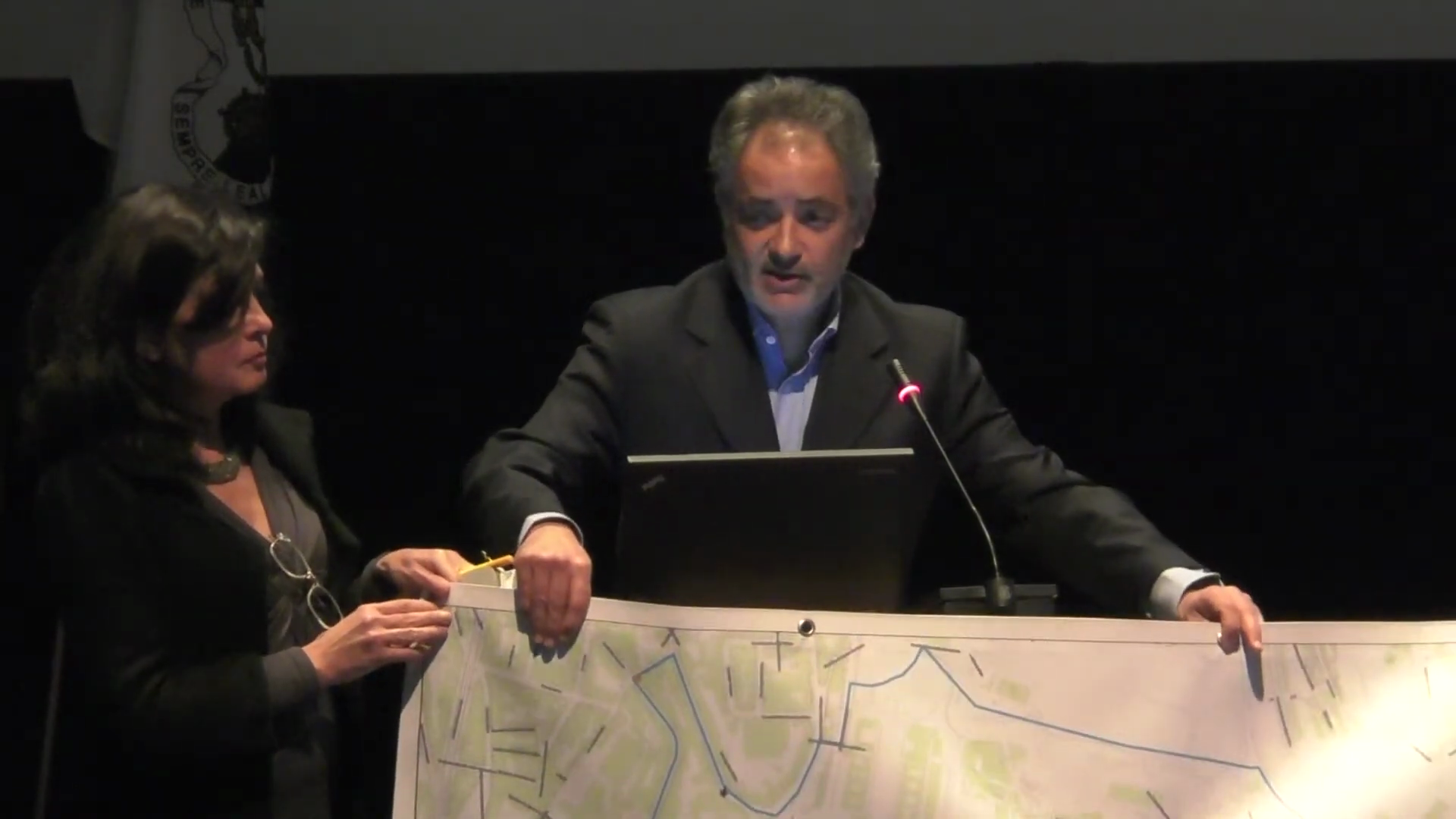

As duas Juntas de Freguesia envolvidas neste tema – São Vicente e Penha de França – pronunciaram-se no contexto da petição de Sandra e junto da AML. A Junta de Freguesia de São Vicente foi sucinta na tomada de posição, dizendo que “a Junta de Freguesia entende que não deve pronunciar-se sobre esta matéria” – isto apesar de “esta matéria” ter tudo a ver com o território da freguesia. Disse, ainda assim, que “por princípio” um OP proposto e votado para São Vicente deveria concretizar-se nesse território, mas que “naturalmente que a sua concretização ficará condicionada, no nosso entender, à exequibilidade desse projecto para as localizações propostas pelos cidadãos, matéria tecnicamente complexa, mas que não é decidida pela Junta de Freguesia”, competindo aos serviços municipais.
Já a Junta de Freguesia da Penha de França disse que “não se opôs à relocalização do projecto parque inclusivo no Forte de Santa Apolónia”. E detalha: “o educando da proponente Patrícia Leal frequenta a Escola Patrício Prazeres, sita na Penha de França, o que explica a concordância com a localização do parque adaptado no Forte, que é próximo. Mais se diga, a este propósito, que a Escola Patrício Prazeres é uma escola inclusiva, tem um núcleo dedicado a crianças com necessidades educativas especiais, uma comunidade educativa fortemente mobilizada para estes temas e que já ganhou um Orçamento Participativo da Junta de Freguesia para a instalação de uma Sala Snoozlen, pelo que a instalação do parque inclusivo nas imediações se enquadra muito bem neste cluster”. A Junta da Penha diz também que existiu um “esforço de compatibilização das duas propostas” e que “é habitual, nos Orçamentos Participativos, as propostas sofrerem alterações após a análise técnica dos serviços, os quais procuram afincadamente garantir a viabilidade e exequibilidade das ideias dos cidadãos, de modo a não recusarem propostas nem cortarem a participação cívica”.

Porque o objecto analisado foi a petição de Sandra e não o conflito entre OPs, Patrícia não foi ouvida na AML pelos deputados municipais, mas ao LPP também reconhece que existiram “falhas de comunicação” em todo este processo. “Deveriam ter dito à proponente desta nova proposta que já tinham um parque infantil desenhado para aquele local. Falharam na comunicação e isso originou todo este desentendimento.”
Para a proponente da ideia do OP 2018/19, o importante é que “se chegue a um consenso” para que “todo este pesadelo acabe e que haja um entendimento”, disse, confessando estar desgastada do assunto.“Sou mãe de uma criança com deficiência. E nem imaginam a dor que isso é. Em Lisboa, as crianças praticamente estão excluídas”, desabafa. “Isto foi uma ideia que eu tive mas que não levo como minha, foi para bem da cidade, das crianças. A minha forma de trabalhar é ao nível de cooperação e de entendimento. Gostava era que isto saísse da gaveta, mesmo que o parque não seja ali no Forte e que vá para outro local” Patrícia elogia o trabalho dos técnicos municipais. “O projecto estava espectacular. Não se esqueceram de nada. Fizeram para todos os tipos de deficiência, para quem não ouve, para quem não vê. Tinham uma parte do jardim com cheiros para as crianças e com sons. Pensaram em todas as crianças mesmo, que é algo que não acontece em todos os parques. E senti mesmo um grande investimento dos técnicos e que estavam felizes por terem feito este projecto.”
Para Patrícia, que foi entretanto eleita também como independente na lista do BE para a Assembleia de Freguesia de São Vicente, ambos os projectos são importantes para este território. “O dela porque fazem falta espaços verdes nesta parte da cidade, para respirarmos e termos tranquilidades. O meu porque as crianças precisam de exercer um dos seus direitos, que é o direito a brincar.”
